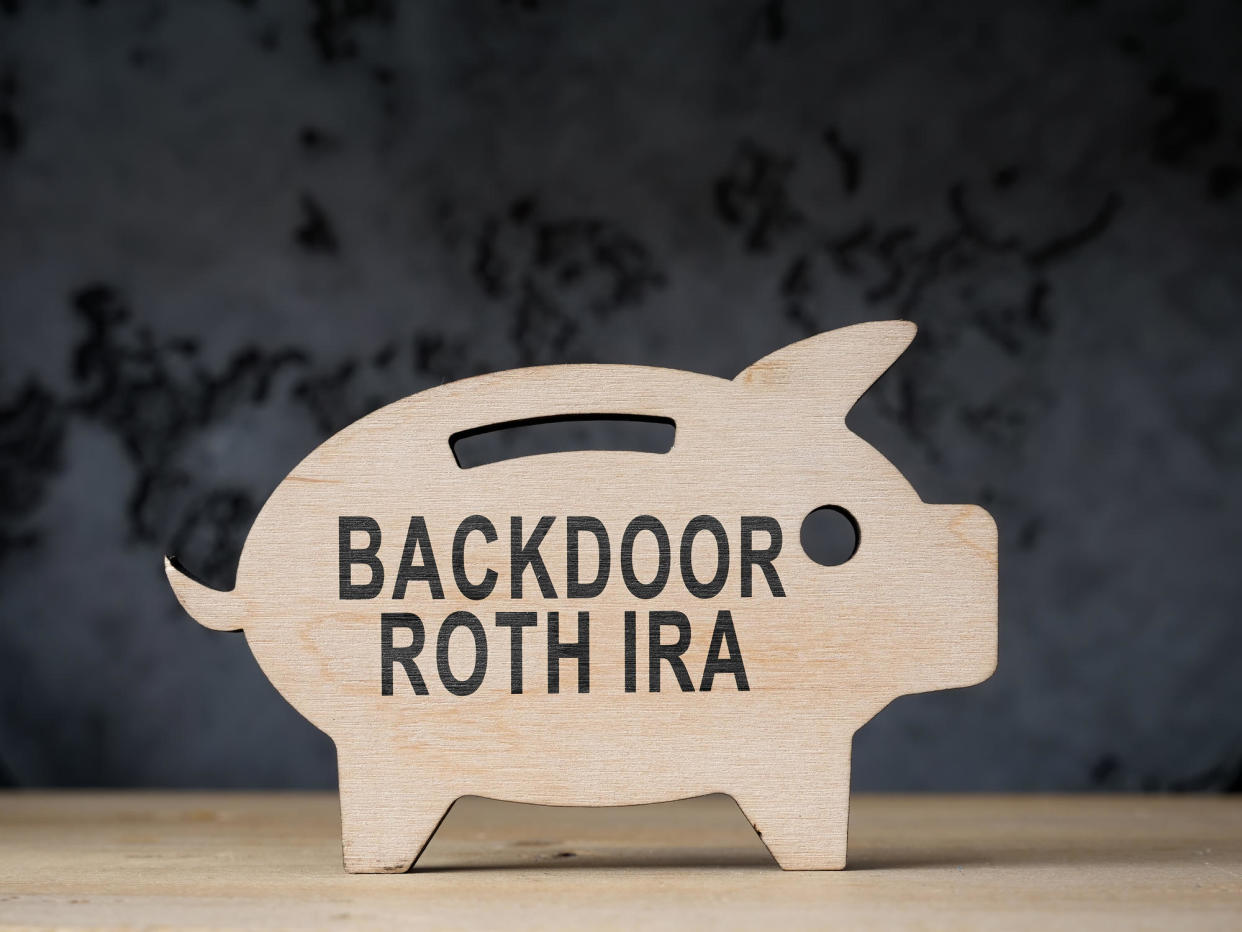Backdoor Roth IRA allows tax-free growth: How to get started

Is your income too high to contribute to a Roth IRA? Don't rule it out yet. By using a backdoor Roth IRA, you can legally get your money into a Roth IRA account each year — no matter how much you make.
If you're interested in growing your long-term savings, consider researching your Roth IRA options through a trusted online site. See how it could fit into your current retirement plan.
Still not sure how a Roth IRA fits into your overall plan? Read on to learn more.
What is a backdoor Roth IRA, and how does it work?
Income limits restrict who can directly contribute to Roth IRAs without incurring penalties. However, traditional IRAs don't have any income limits. As a traditional IRA holder, you can convert your account into a Roth IRA no matter your income level. So, if you make too much to contribute to a Roth IRA, you can contribute to a traditional IRA and convert it into a Roth IRA. That's the backdoor route.
Anyone can qualify for a backdoor Roth IRA, as long as you make enough taxable income to match your contribution. Backdoor Roth IRAs don't make sense unless your income exceeds the Roth IRA income limits, which currently start at $129,000 for single filers.
The main difference between a Roth IRA and a backdoor Roth IRA is how the money gets into the account. Here's a brief recap:
Roth IRA: You make the contributions directly into the account. Backdoor Roth IRA: You make the contributions into a traditional IRA which are then converted into the Roth IRA.Is a backdoor Roth IRA worth it?
The main benefit of a backdoor Roth IRA is the tax-free growth the account provides. You pay taxes on contributions upfront and won't be taxed when you make qualified withdrawals in retirement.
If you're looking to add to your retirement portfolio or convert an existing IRA, then get started today.
You also won't be required to take mandatory withdrawals once you turn 72 (as you would with a traditional IRA). Roth IRAs are often most appealing to those who expect to have a higher tax rate in retirement than they have now.
Does a backdoor Roth IRA trigger taxes?
Converting a traditional IRA to a Roth IRA can trigger taxes. With traditional IRAs, you get a tax break upfront (via deductions) and pay taxes when you withdraw the funds. Roth IRAs work the opposite way. Contributions are made with post-tax funds and qualified distributions are tax-free.
If you've taken deductions for all the contributions in your traditional IRA, you'll need to pay taxes on the full amount you convert. The total will be added to your gross income for the year and taxed according to the rate for your tax bracket.
The pro rata rule
Taxes get more complicated if you want to convert part of your traditional IRA and have a mix of pre- and post-tax dollars in the account. In this case, the pro rata rule comes into play. The IRS will look at the ratio of pre-tax to post-tax dollars in all of your IRA accounts. Then, your conversion will be taxed according to the percentage of IRA funds that are pre-tax.
When to avoid a backdoor Roth IRA conversion
You can perform a Roth IRA conversion immediately after your traditional IRA contribution. Doing so is a good idea as it doesn't leave time for you to take deductions and doesn't allow taxable interest to accrue. However, there are some specific circumstances where you may want to avoid it.
A backdoor Roth IRA conversion may not be the best solution when you want to convert a large pre-tax balance. The conversion can bump you up into a higher tax bracket and cause a large tax bill.
For example, if your gross income is $400,000 in 2022, your tax rate will be 35%. If you perform a backdoor Roth IRA conversion on a $50,000 pre-tax balance, you'll owe $17,500 in taxes on the conversion alone. Whether that makes sense for you will depend on if you're prepared to pay that tax bill and the benefits you stand to gain from the conversion in the long run.
It's generally best to avoid a Roth IRA conversion if you plan to pay the tax bill with an early distribution from your Roth IRA. Doing so typically comes with a 10% penalty tax and can greatly set back your account's growth potential.
Alternatives to a Backdoor Roth IRA
If a backdoor Roth IRA isn't the right fit for you, there are other investment alternatives to consider as a high-income earner.
For example, investing in a Health Savings Account (HSA), a brokerage account, real estate or a Roth 401(k). You could also max out your 401(k) pre- and post-tax contributions. All can help to grow your nest egg, preventing it from collecting dust in a bank account.
A financial advisor can also help you explore other options or determine what route is best for you.
Watch: "God Save the King" is sung at the end of Queen Elizabeth II's funeral
Watch: Queen Elizabeth II's state funeral service at Westminster Abbey
Biden says no decision yet on re-election try: CBS News Flash Sept. 19, 2022

